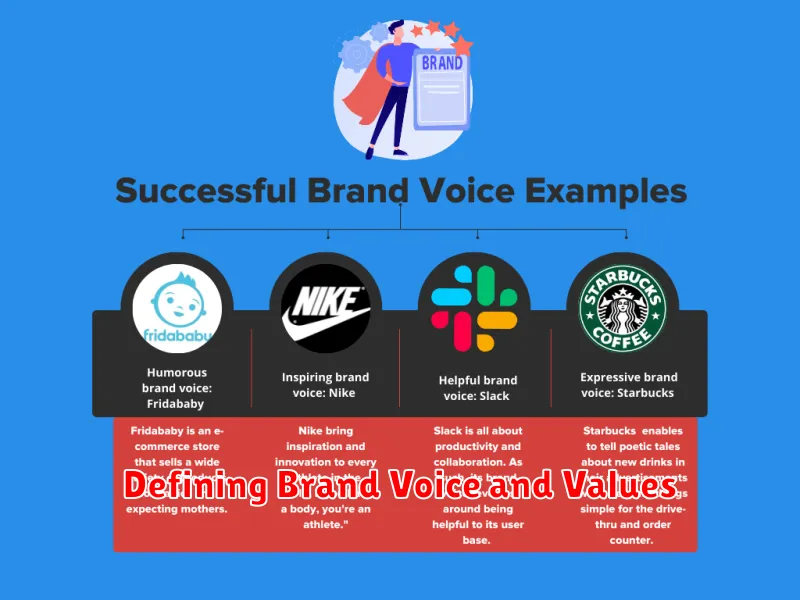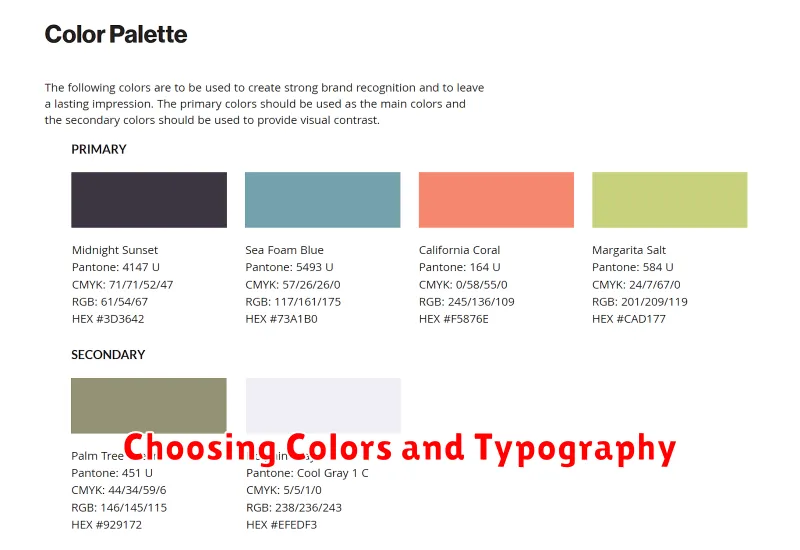Creating a strong brand identity is crucial for any business, regardless of size or industry. It’s the foundation upon which you build recognition, trust, and loyalty with your target audience. A well-defined brand identity goes beyond just a logo; it encompasses your values, personality, and the overall experience you deliver. This comprehensive guide will explore the essential elements of brand identity development, providing actionable steps to help you craft a unique and compelling brand that resonates with your customers and sets you apart from the competition. From defining your brand values and brand personality to crafting a consistent brand voice and visual identity, we’ll cover everything you need to know to establish a powerful and enduring presence in the market. Understanding the importance of brand identity is the first step towards building a successful and sustainable business.
In today’s competitive landscape, a compelling brand identity is more important than ever. It’s the differentiating factor that helps customers choose your product or service over others. A strong brand identity not only attracts new customers but also fosters loyalty among existing ones. This article will delve into the process of creating a brand identity that truly reflects your business’s core values and resonates with your target audience. We will discuss key components such as brand strategy, brand messaging, and brand experience, providing practical advice and insights to help you build a brand identity that drives growth and establishes your business as a leader in your industry. Investing in your brand identity is an investment in the future of your business.
What Is Brand Identity?
Brand identity is the visible face of your brand, encompassing all the tangible elements that consumers interact with. It’s the cumulative perception of your company, formed through elements like your logo, color palette, typography, and overall visual style.
A strong brand identity creates recognition and differentiates your business from competitors. It communicates your core values and personality, shaping how customers perceive and connect with your brand.
Brand identity is distinct from brand image, which is the perception of your brand held by consumers. While you can shape brand identity, brand image is ultimately controlled by the public.
Why It’s More Than a Logo
A logo is a crucial element of your brand identity, but it’s not the entirety of it. While it serves as a visual representation, your brand identity encompasses much more. Think of it as the personality of your business. It’s how you communicate your values, your mission, and your unique selling proposition to your target audience.
Brand identity is the culmination of various elements working together. These elements include your brand’s name, messaging, tone of voice, and the overall experience you provide to your customers. A well-crafted brand identity creates recognition, builds trust, and fosters loyalty among your customer base.
A strong logo is undoubtedly important for instant recognition. However, if the rest of your brand experience doesn’t align with the message your logo conveys, it can create dissonance and confusion. Consistency across all touchpoints is key to establishing a strong and recognizable brand presence.
Defining Brand Voice and Values

A crucial step in creating a strong brand identity is defining your brand voice and values. These elements work together to shape how your brand communicates and resonates with your target audience. Brand voice refers to the personality and tone used in all brand communications. Think about how you want to sound – professional, friendly, authoritative, quirky, etc.
Brand values, on the other hand, represent the core principles that guide your business decisions and actions. These values should reflect what your brand stands for and what is important to your company culture. Honesty, innovation, sustainability, and customer focus are examples of common brand values.
Clearly defining both voice and values ensures consistency across all platforms and touchpoints, building a recognizable and trustworthy brand identity. This consistency fosters deeper connections with your audience, who are more likely to engage with a brand that aligns with their own values and preferences.
Choosing Colors and Typography

Color and typography are crucial elements of your brand identity. They communicate your brand’s personality and values at a glance. Choosing the right combinations can significantly impact how your audience perceives your business.
Color Psychology plays a vital role. Different colors evoke different emotions. For example, blue often represents trust and stability, while red can signify excitement or urgency. Consider your target audience and the message you want to convey when selecting your brand colors.
Typography, the art and technique of arranging type, is equally important. Your chosen fonts should be legible and reflect your brand’s personality. A modern, minimalist brand might opt for clean sans-serif fonts, while a traditional business might choose a more classic serif typeface.
Creating a cohesive look requires careful pairing of color and typography. Ensure your chosen fonts are readable against your background colors and that the overall aesthetic aligns with your brand’s message. Consistency across all platforms is key to building a strong and recognizable brand identity.
Creating a Brand Style Guide
A brand style guide is a comprehensive document outlining the visual and written elements that make up your brand identity. It ensures consistency across all platforms and materials, reinforcing your brand image to your target audience.
Key elements typically included are:
- Logo Usage: Specifications on logo variations, spacing, and prohibited uses.
- Color Palette: Defined primary and secondary colors, including hex codes and Pantone values.
- Typography: Designated font families for headlines, body text, and other applications.
- Imagery: Guidelines on the style and tone of photography and illustrations.
- Voice and Tone: The personality and language used in all communications.
By establishing these standards, a style guide empowers your team and external partners to accurately and effectively represent your brand.
Ensuring Consistency Across Channels
Maintaining a consistent brand identity across all communication channels is crucial for building recognition and trust. This involves presenting a unified brand experience, regardless of whether a customer interacts with your business through your website, social media platforms, email marketing, or physical store.
Key elements to consider for cross-channel consistency include:
- Visual Identity: Use the same logo, color palette, typography, and imagery across all platforms.
- Brand Voice: Employ a consistent tone and language that reflects your brand personality in all communications.
- Messaging: Ensure core brand messages and value propositions are communicated clearly and consistently.
- Customer Experience: Strive to provide a seamless and positive customer experience across all touchpoints.
By prioritizing consistency, you reinforce your brand identity and create a more memorable and impactful experience for your customers.

